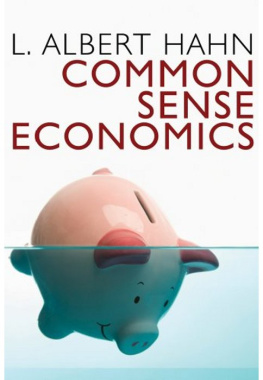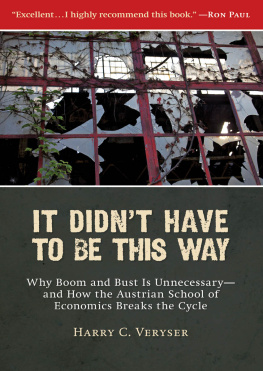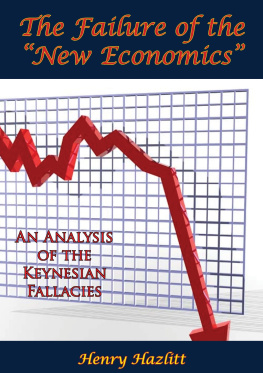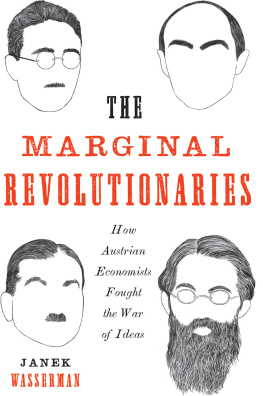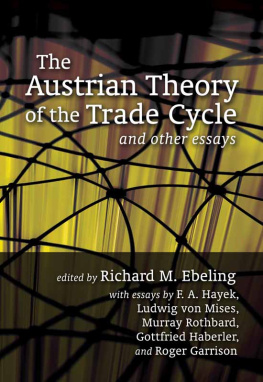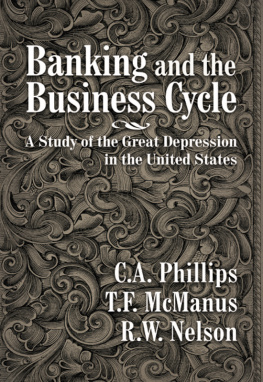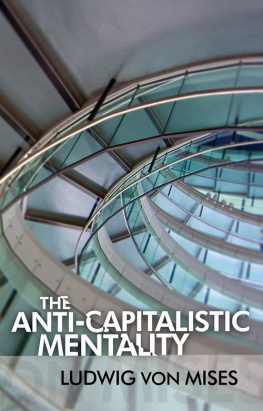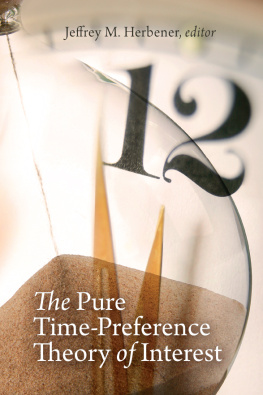COMMON SENSE ECONOMICS
by
L. ALBERT HAHN

Copyright 1956 by L. Albert Hahn
Library of Congress Catalog Number: 56-5919
PRINTED IN GREAT BRITAIN BY JARROLD AND SONS LTD, NORWICH,
FOR THE PUBLISHERS,
ABELARD-SCHUMANN LIMITED, 404 FOURTH AVENUE, NEW YORK 16, N.Y.,
38 RUSSELL SQUARE, LONDON, w.c.1, ENGLAND.
The propensity to work,
and not the propensity to spend,
is the foundation
of national income and wealth
FOREWORD
As the English version of this book goes to press the economy of the United States, as well as that of many European countries, has reached a state which can be described only as that of a highly inflationary boom. All pertinent datatotal investment, demand deposits, consumer credits and productionshow clearly a steep upward trend. And many characteristic signs of an overstressed economy, such as bottlenecks in employment and raw materials, backlogs for deliveries, exaggerated stockmarket booms, have made their appearance.
The inflationary character of the American boom is now recognized by an increasing number of economists but is still denied by some. The main argument in support of the latter's opinion, and therefore of a laissez-faire, laissez-aller attitude, is based on the relative stability of the general price level in the United States.
The consumer price averages have indeed remained entirely, and the wholesale price averages almost, unchanged since 1953. However, the picture is very different when one examines the prices of the single groups of commodities upon which the price averages are based. One sees immediately that the prices of industrial finished goods have risen substantially since 1953, and those of industrial goods, especially building materials, since 1954. These increases are offset in the price averages by the decline in agricultural prices. But this decline is merely the result of the liquidation of over-production during the World and Korean wars. Viewed from a quantity theoretical standpoint these lower prices appear to be due to a temporary over-supply from the side of goods; this, however, does not change but only conceals the over-demand from the money side. The price movements in the industrial sector alone show all the features of inflation. And this is decisive. For crises are nowadaysthis should not be forgottenindustrial and not agricultural crises.
But apart from this it seems very doubtful that much importance can be attributed to the stability of the price level in
unemployment disappeared, but at the price of continued inflation.
Recognizing the danger of inflation the authorities have, since the beginning of 1955, allowed the interest rates to go up somewhat. But the boom has not decreased and has even increased in vigorsee, for instance, the movement of prices for steel scrap and certain metals in 1955.
This is not surprising. For the measures adopted are adequate only for dampening but not for stopping inflation. What the authorities are doing, in order to keep the economy running at a high level of production and employment, is to tighten the reins when inflation seems to be getting out of hand, and to loosen themthus resorting again to inflationas soon as the boom appears to be weakening. One must concede that this policy of leaning against the wind is carried out with ability andconsidering the strong political pressure in favor of inflationwith remarkable courage. But will this policy which is nevertheless one of inflation, even though that inflation is a slow and regulated one, succeed in the long run? I doubt it. It is the tragedy of every boom created and carried forward by inflationary credit expansion that it never leads to stabilization but always to reaction.
Thus there is only the choice: either one tolerates further inflation, then the boom continues until a saturation point of demand is reachedat that point a depression will inevitably set in, the more severe the longer the boom has lasted; or one stops inflation, then the reaction sets in immediatelya very unwelcome occurrence especially in an election year.
This whole paradoxical situation of the economies of the United States and of most Western countries is, I think, in the last analysis the logical consequence of an economic policy which in theory overstresses the importance of effective demand for the attainment of full employment, and in practice recommends the correction of any sign of unemployment by more and more credit expansion, using for its justification the old purchasing power theory and all the other semi-scientific arguments advocated for centuries by inflationists.
The present book is, from the first to the last word, nothing but an endeavorperhaps inadequateto demonstrate the theoretical shortcomings and the practical danger of this philosophy by stressing the importance of the supply of production factors for the maintenance of a high and stable level of economic activity.
My grateful acknowledgments are due to Mrs. Elizabeth Henderson of London and Rome, whose editing improved the English manuscript and purged it of a number of inconsistencies.
Paris, June 1956. A. H.
PREFACE
My book, The Economics of Illusion, published in 1949, was essentially a critique of the late Lord Keynes' General Theory of Employment, Interest and Money. My conclusion was, briefly, that what is new in Keynes' work is not good, and what is good is not new.
Since then I have often been asked to add to my negative critique of Keynes' theory the positive exposition of an economic theory which offered a more correct explanation and description of economic reality. The present book is my answer to this request. I have called it Common Sense Economics in contrast to Keynes' theory, which I regard as illusion economics since its underlying factual assumptions seem to me to rest on illusion.
I approached this work with mixed feelings. On the one hand, I was fully aware of the fact that professional economists have more experience and a better technique in the exposition of economic relationships than a person whose main activity has consisted in making business decisions. On the other hand, I had long been tempted to try, at some time, to describe the economic model which I myself, after more than thirty years of activity in economic theory and practice, regard as adequate because close to reality. Also, I have often asked myself how I would rewrite today my Economic Theory of Bank Credit, which first appeared thirty-five years ago.
The arrangement of the present volume is in deliberate contradiction to that usual nowadays, particularly in English and American literature, following Keynes' General Theory.
In my view, the Keynesian theory is original, but also fatal in its peculiar, almost paradoxical, decisions as to what is to be regarded as constant and what as variable in the economy. The workers' nominal wage demands, for instance, are assumed to be relatively constant, while aggregate purchasing power is assumed to be continuously fluctuating and the economy therefore continuously exposed to inflation and deflation. The ensuing picture of the economy appears to the non-Keynesian as a sort of trick film. Everything happens in a manner that is exactly the opposite of what he is used to. It is no longer the supply of labor, but the propensity to consume which determines the volume of production; the old and oft-refuted under-consumption theoriesof which Keynes' theory is no more than a replicaonce more become respectable. I am firmly convinced that this allegedly revolutionary progress in economic science is really retrogression compared to classical economics. The

